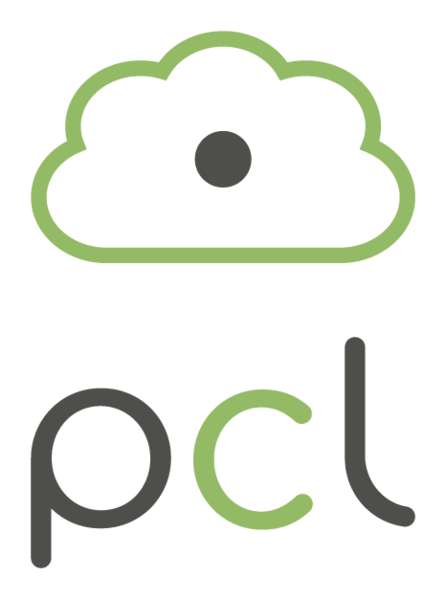
What is Rotation Averaging?
Problem1
Given a set of rotation matrices \(C_i, i=\{1,2,...,n\}\), the average of them is ? Rotation Averaging is to calculate the average of a set of rotation matrices. Averaging is to get the best estimate of all rotations. (Single rotation averaging)
Or equivalently, Rotation Averaging is the problem of estimating a set of \(n\) unknown orientations \(R_1,...,R_n \in SO(d)\) from noisy measurements \(\bar{R} \in SO(d)\) of the relative rotations \(R_i^{-1}R_j\) between them. (Multi rotation averaging)
In practical the rotation averaging problem could be categoried into : Single rotation averaging、Multi rotation averaging and Conjugate rotation averaging.
- Single rotation averaging: for instance,
used in the case where several measurements of a single rotation R are given. These may be for instance measurements of the orientation of an object, derived from measurements taken with different cameras in a calibrated network. If the measurements are noisy, they can be averaged to find a mean.
- Multi rotation averaging: for instance,
estimate the rotation of camera in SFM. More practical applications in OpenMVG.
- conjugate rotation averaging: for instance,
hand-eye coordinate problem, that is, consider a robot manipulating some object, which is also observed by a stationary camera. The orientation of the object can be computed at each moment through knowledge of the geometry of the robot (for instance, joint angles). At the same time, the orientation of the object can be computed from the images taken from the camera. This gives two separate estimates of the orientation of the object (expressed as a rotation), but these are in different coordinate frames. By solving the conjugate rotation problem, one can compute the relationship between the robot and camera frames.
For all these problems, Rotation Averaging is to find provably optimal and convergent solutions.
Rotation Averaging12
Assume the average rotation matrix is \(\bar{C}\), The angle \(\Delta \delta_i\) between \(\bar{C}\) and \(C_i\) , \(C_i \mbox{ and }\bar{C} \in SO(3)\), could be calculated as followings: \[ \Delta C_i=\bar{C}^TC_i \] The cosine value of \(\Delta \delta_i\) is: \[ \begin{align} cos \Delta \delta_i &= \frac{tr(\Delta C_i)-1}{2} \\ &=\frac{tr(\bar{C}^TC_i)-1}{2} \\ \end{align} \] The sum of all cosine value of \(\Delta \delta\), also known as \(Karcher\) mean: \[ \begin{align} \Sigma_i^n cos \Delta \delta_i &= \Sigma_i^n\frac{1}{2}(tr(\bar{C}^TC_i)-1) \\ &=\frac{1}{2} \Sigma_i^ntr(\bar{C}^TC_i)-\frac{n}{2} \end{align} \] Minimize the sum of angles between \(\bar{C}\) and \(C_i\) is to maximize \(\Sigma_i^ntr(\bar{C}^TC_i)\). ==??? why minimize??? to get the best estimate== \[ \begin{align} \Sigma_i^ntr(\bar{C}^TC_i) &= tr(\Sigma_i^n \bar{C}^TC_i) \\ &=tr( \bar{C}^T \Sigma_i^nC_i) \mbox{ // trace operator} \\ &=tr( \bar{C}^T U\Sigma V^T) \mbox{ // why?}\\ &=tr( V^T\bar{C}^T U\Sigma) \mbox{ // trace operator} \end{align} \] where \(V^T,U,\bar{C}^T\) are orthogonal matrices[^ 3].
Then set \(O=tr(V^T \bar{C}^T U)\), it is also orthogonal matrix. \[ \begin{align} tr(V^T\bar{C}^T U\Sigma) &= tr(O \Sigma) \\ &= tr( \left[\begin{array}{ccc} O_{11} & O_{12} & O_{13} \\ O_{21} & O_{22} & O_{23} \\ O_{31} & O_{32} & O_{33} \end{array} \right] \left[\begin{array}{ccc} \delta_{11} & & \\ & \delta_{22} & \\ & & \delta_{33} \end{array} \right] ) \\ &= O_{11} \delta_1 + O_{22} \delta_2 + O_{33} \delta_3 \end{align} \] where \(O\) is orthogonal matrix, means \(\Sigma_{j=1}^3 O_{jk}^2=1, \mbox{ for} \quad k=1,2,3\). And the \(O_{11} \leq 1,O_{22} \leq 1,O_{33} \leq 1\).
Let \(O_{11} = 1,O_{22} = 1,O_{33} = 1\), Then \[ O=\left[\begin{array}{ccc} 1 & & \\ & 1 & \\ & & 1 \end{array} \right] =I \] then $V^T {C}^T U=I {C}T=VUT {C} =UV^T $.
Then check the determinant of \(UV^T\), which should be 1. \[ \bar{C}=U \left[ \begin{array}{ccc} 1 & & \\ & 1 & \\ & & det(UV^T) \end{array} \right] V^T \mbox{ // why?} \]
Code
OpenMVG & Ceres for LM optimization.
Simplest toy code test:
1 | |
Shonan Rotation Averaging4
This is a fast, simple, and elegant rotation averaging algorithm that is guaranteed to recover globally optimal solutions under mild assumptions on the measurement noise. The method employs semidefinite relaxation in order to recover provably globally optimal solutions of the rotation averaging problem.
Code
Already inside GTSAM-4.1
RCD: Rotation Coordinate Descent5
RCD is a fast rotation averaging algorithm that achieves global optimality under mild noise conditions on the noise level of the measurements.
Code
Hybrid Rotation Averaging: A Fast and Robust Rotation Averaging Approach7
Code
Graph Optimizer: This library contains not only rotation averaging solvers, but also some popular methods in 3D vision, such as translation averaging, clustering, etc. The library is designed to deal with large scale optimization problems, and is easy to extend.
iRotAvg6
incrementally solves rotation averaging.
Code
Diff
What is the difference between rotation averaging and SLAM ? Or status estimation? SLAM tries to estimate both translation and rotation,while rotation averaging estimate the optimal rotation only.
Others
rotation averaging used by Fast Point Transformer, is a post-process optimization scheme? Perhaps yes.
Reference
- Hartley R, Trumpf J, Dai Y, et al. Rotation averaging[J]. International journal of computer vision, 2013, 103: 267-305. ↩︎
- https://www.cnblogs.com/JingeTU/p/16818609.html ↩︎
- https://en.wikipedia.org/wiki/Orthogonal_matrix ↩︎
- Shonan Rotation Averaging: Global Optimality by Surfing \(SO(p)^n\), ECCV 2020 ↩︎
- Rotation Coordinate Descent for Fast Globally Optimal Rotation Averaging, CVPR 2021 ↩︎
- Visual SLAM: Why bundle adjust?, ICRA 2019 ↩︎
- Hybrid Rotation Averaging: A Fast and Robust Rotation Averaging Approach, CVPR 2021 ↩︎
